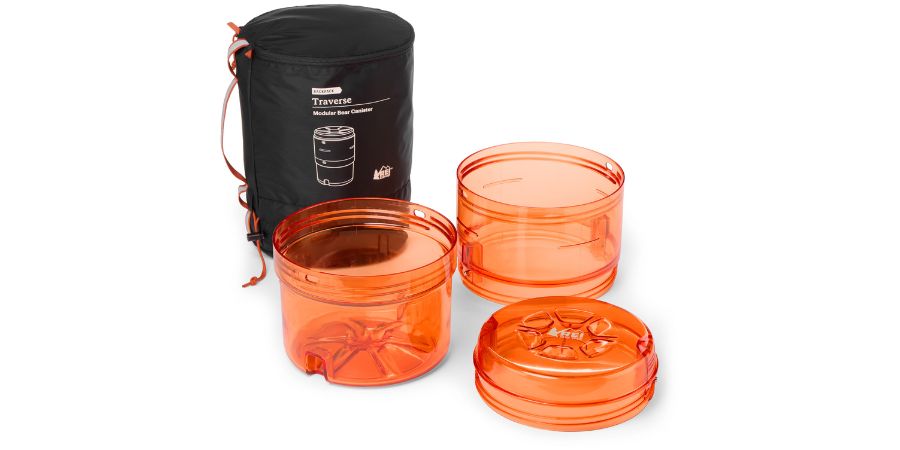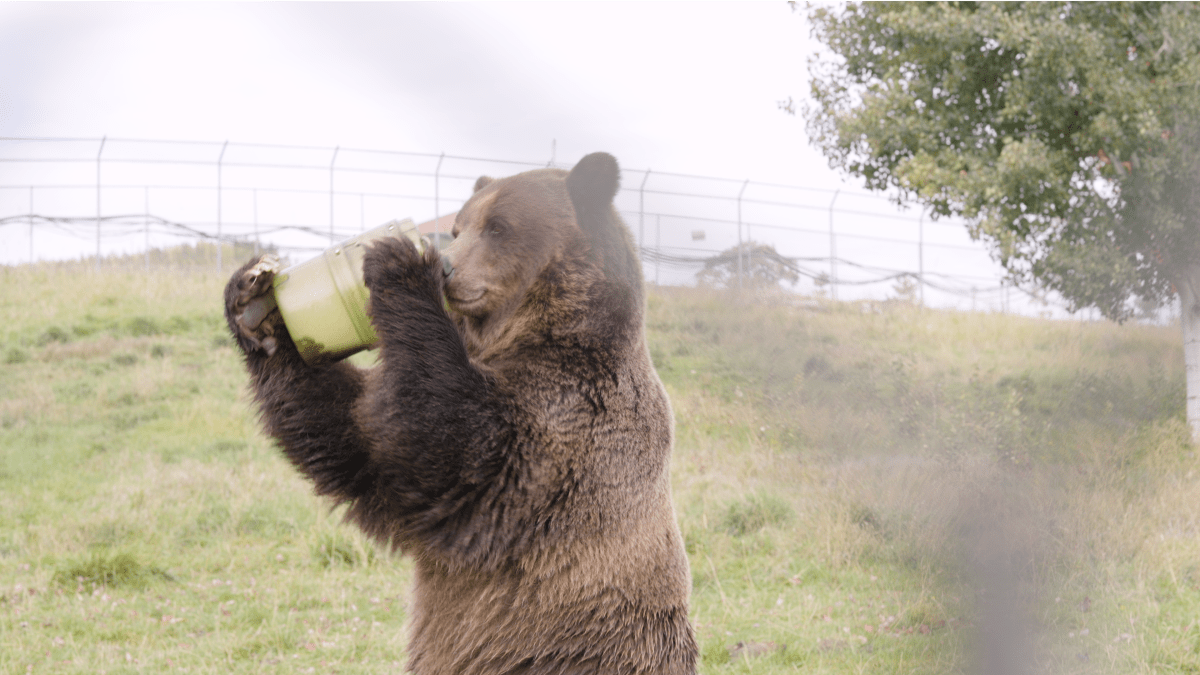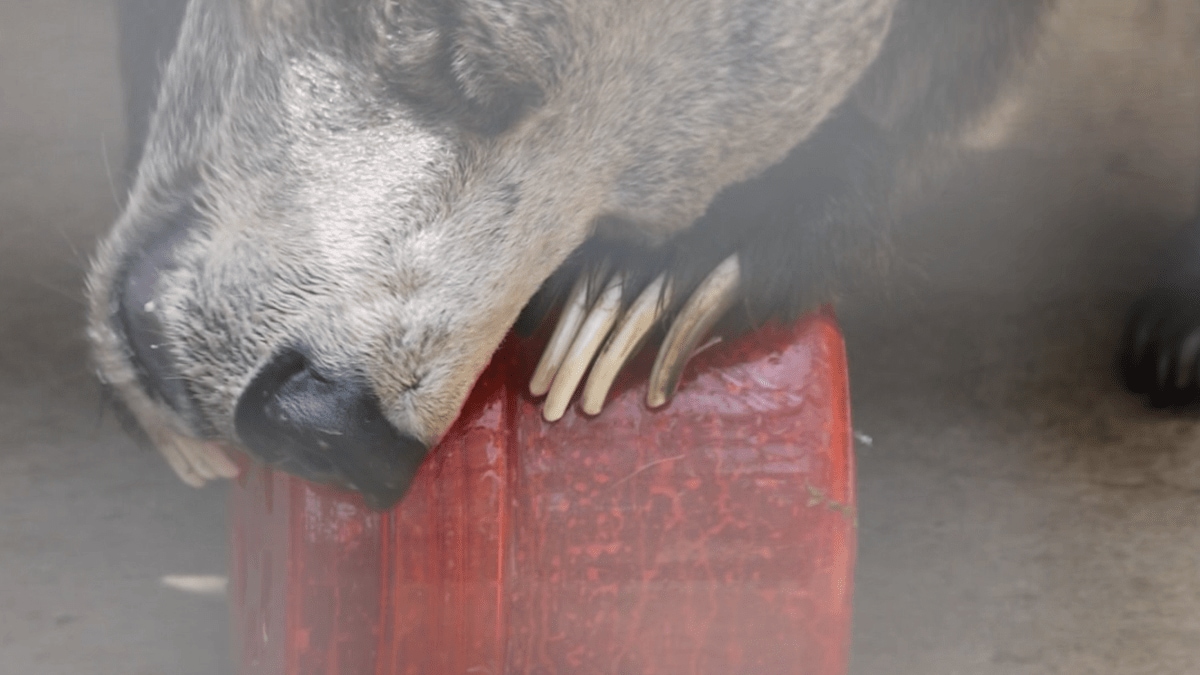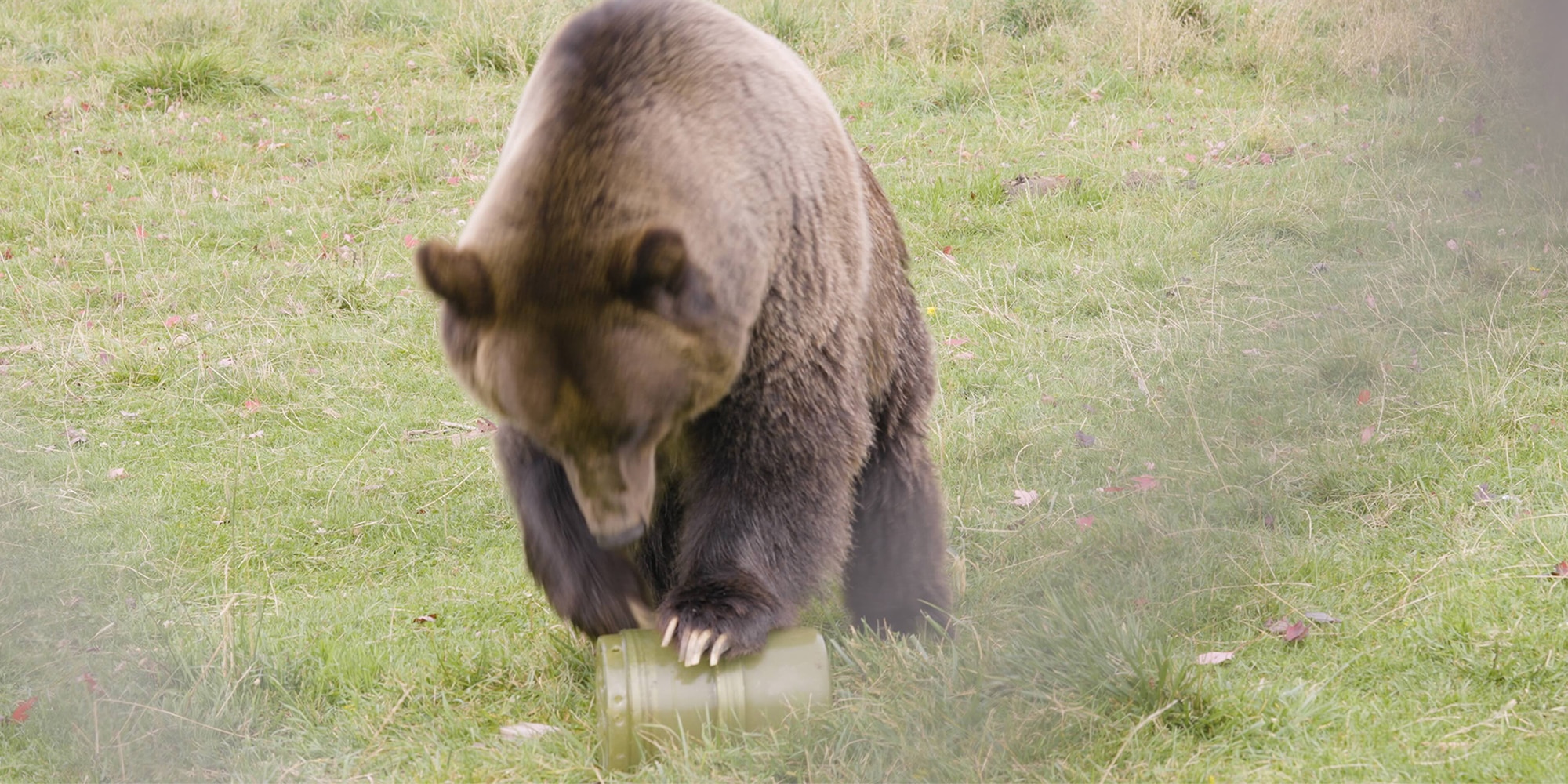When the REI Co-op Traverse bear canister hit the shelves this year, it changed the game for anyone who camps or backpacks in bear country. Traditional bear-resistant food canisters come in different sizes, requiring multiple cans for trips of various distances or forcing you to carry a larger size than you need for an entire trip.
The unique modular design of the new REI Co-op Traverse bear canister offers two sizes in one product. Use the smaller 6.75-liter configuration for shorter trips or combine two sections for the full 11.25-liter size—suitable for multiday trips. As your food supply decreases, nest one section of the canister into the other to free up pack space.

The canister is made of durable, bear-tested polycarbonate that’s translucent, so customers can easily see their food. And its bright orange color makes it easier to spot even in the dark. (Bears smell food long before they see it.)
“We focused on making this new canister design as intuitive and as easy as it possibly could be,” says Nate Bullock, a senior product designer at REI.
Bear tested, human approved

REI Co-op designers thought out—and tested—every feature of the can to ensure that bears stayed out while backpackers could easily get in.
“We did two different kinds of research methodologies for the bear canister,” explains Bryan Jackler, REI product researcher. One test involved people. The other one involved bears.
Initial testing with people centered on ease of use and functionality of the modular system. The team used prototypes that they created with a 3D printer. “The canister was the first large product we ever printed on a 1-to-1 scale,” explains Devin Paschke, manager of engineering and product development for REI and the brain behind the bear canister.
The team sent those prototypes into the field with testers—though not in bear territory—and used the feedback to make improvements. After multiple 3D-printed prototypes and more testing, they created a durable polycarbonate canister ready for the biggest challenge yet: live grizzly bears.

Round No. 1
Early one morning in September 2023, Paschke, Bullock and Dave Gardner, REI senior test engineer, drove to the Washington State University Bear Center in Pullman to get their product certified. The Bear Center and its resident grizzly bears regularly test items like coolers, dumpsters and garbage cans for bearproofing effectiveness.
To be certified bear-resistant by the Interagency Grizzly Bear Committee (IGBC), a product must withstand at least one hour of active bear interaction without the animals gaining access. Rolling or dragging the canister doesn’t count as active time, says Gardner. Biting, clawing, throwing and other maneuvers, however, do.
The grizzlies were released into a pen area with a canister filled with temptations like donuts, honey, kibble and Twinkies. “They took the canister onto the hard dirt, the grassy ground and the concrete and just beat it up, throwing it against logs, the walls, whatever,” says Paschke. “Some used brute muscle. Some used what the Bear Center calls ‘chest compressions,’ and some were biters, using their teeth.”

One bear submerged the canister in a trough of water. That caused honey to seep out, Bullock says, but likely also added weight to create an even bigger impact when thrown.
Another bear took the canister into its den, a roughly 10×10 cinderblock room. She stood on hind legs and threw it into the wall so hard it bounced off and hit another.
“It didn’t break. It didn’t crack,” says Gardner. “That was a really cool thing to see. Just one of those things where you realize how powerful these animals are.”
During the first test in 2023, however, one nearly 400-pound grizzly named Kio punctured the upper corners of the lid.
The canister failed. The bears won.
No holes could be larger than one-quarter inch, says Gardner. Persistent bears can turn small holes into bigger ones, so that version failed to meet IGBC standards, he says.
Back to the drawing board
After analyzing the damage from that test, the co-op team refined the design. The bears had been able to get a good handle on the lid with their teeth, Gardner says. So, the team focused on modifying the lid as well as the thickness of the material.
Back in the lab in Seattle, they even created a metal probe to mimic the size and shape of a bear tooth to measure the force to puncture the can.
They also adjusted the can’s color from green to bright orange after noticing how much the canister blended into the grass during the first bear tests, Bullock says.
In June 2024, the co-op team returned with a stronger prototype for a second trial run. Because of the modular design, both the smaller configuration and the larger size had to be individually tested.
This time, the canister won.
Even Kio, the bear who bit into the canister the first time around, couldn’t defeat this version.
“I remember watching the clock with seconds ticking by,” says Bullock, as a wave of relief poured over him. “I was thinking, ‘Hallelujah!”
More feedback
That wasn’t the end of testing, though.
The product testing team sent the bear-approved canister out with expert backpackers on day and overnight trips. After nearly 30 trials, the backpackers evaluated it in a range of temperatures and climates.
“People really loved how the can was modular,” says Jackler. “This is a little bit of a game changer, something that they hadn’t seen before.” Some people felt the canister was slightly heavy but though the modularity was worth that extra bit of weight, he adds.
Testers liked the high-visibility color. “That orange really stands out,” says Jackler.
How the two-in-one modular design works

The two-in-one bear canister consists of three main pieces that work together in a modular design for different food storage needs. The threaded lid screws onto the middle piece when using the canister in its large size. Or screw it onto the bottom piece when using the canister in its smaller configuration. In the smaller size, the middle piece stacks seamlessly outside of the bottom section. The system nests neatly—and conveniently—together.
The user-friendly design incorporates two metal push buttons that are easy to operate without tools. To open the canister, press down on button No. 1 and twist the lid until it stops. Then press the tab marked No. 2 and continue unscrewing the lid to open. (Be sure to watch the video for tips on how to open it.)
The goal was to make it as comfortable and easy to use as possible for a wide range of users, including people with smaller hands or those wearing gloves, says Bullock, who guided the usability and aesthetic design aspects of the canister. “We intentionally incorporated clear instructions and visual cues on both the product itself and the stow sack, knowing that the canister’s unique modular design would be unfamiliar to many users,” says Bullock.
The included carry bag features printed instructions to open, close and convert the canister between sizes. The carry bag’s size can be adjusted too. It’s reflective for visibility under a flashlight or headlamp. Lash loops make it easy to attach on the outside of a backpack, to the webbing on a raft or via carabiner and strap in a kayak.
Watch the video
___
Read more stories Behind the Designs of our favorite products.
